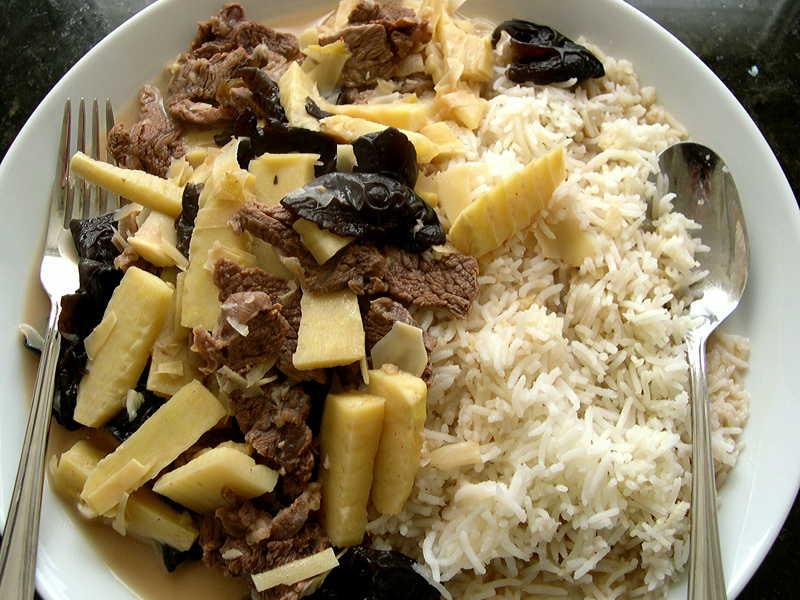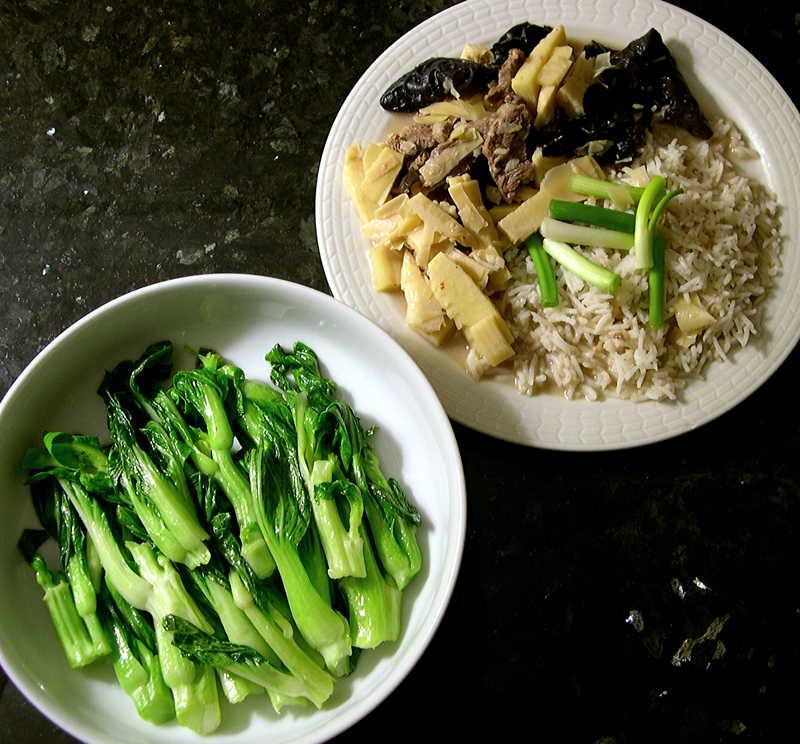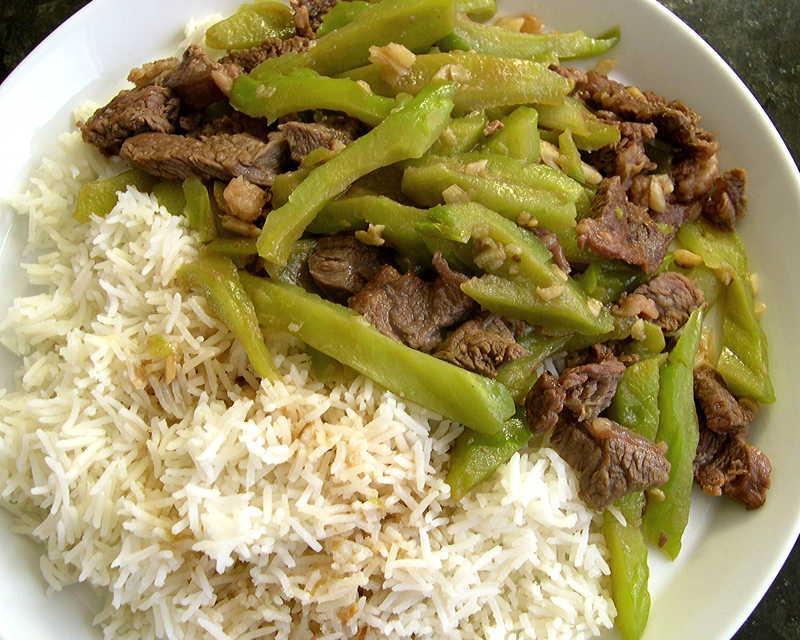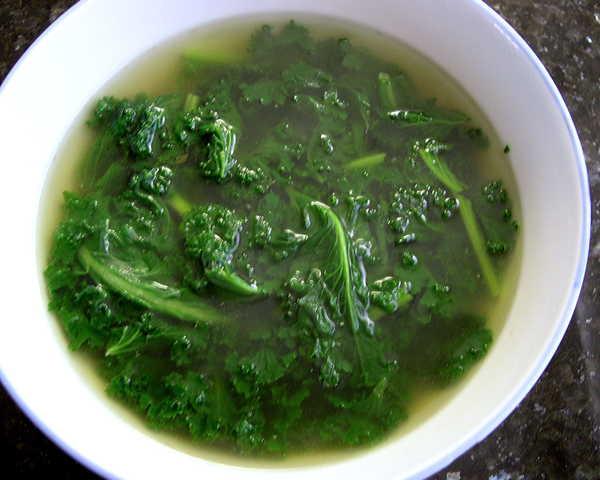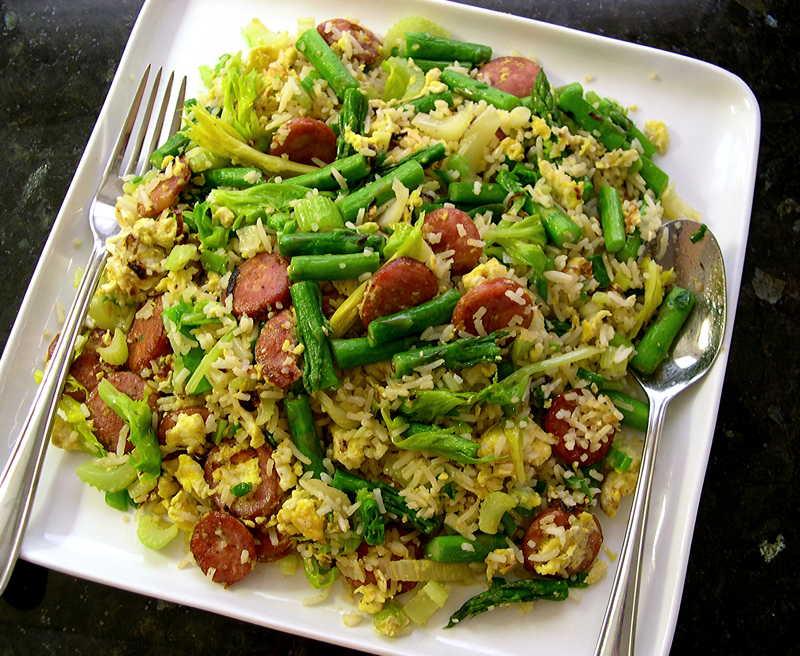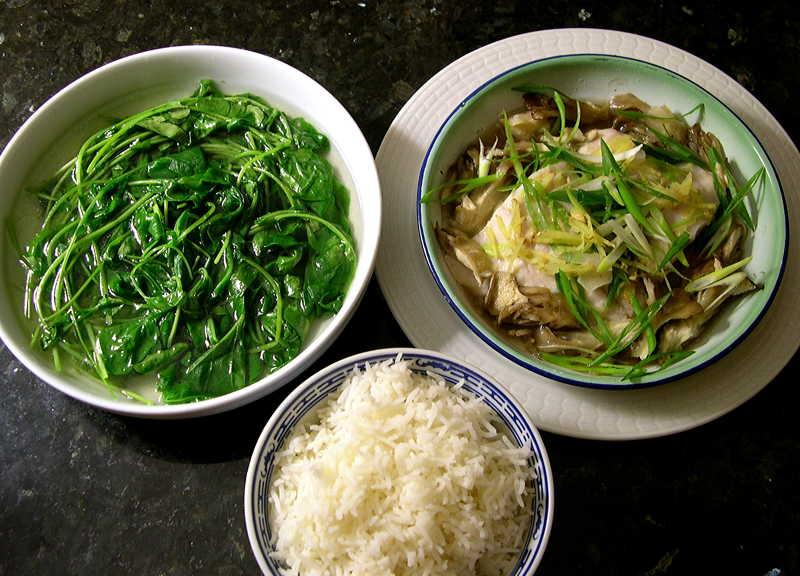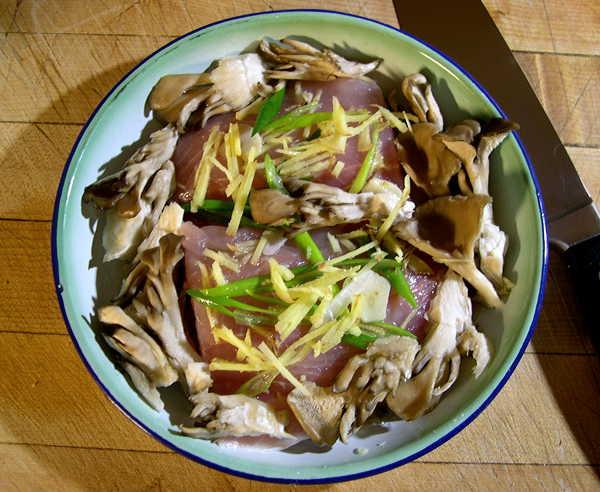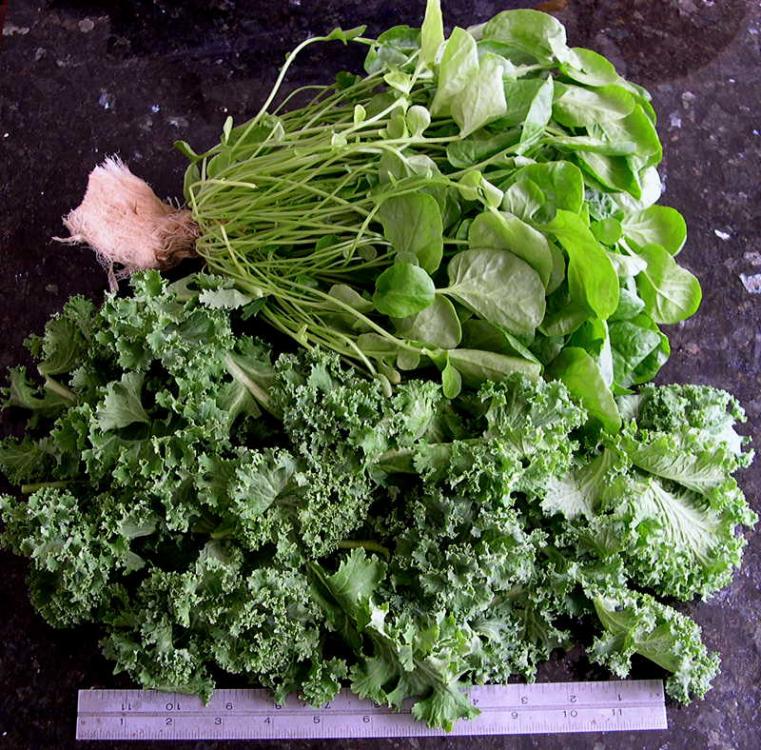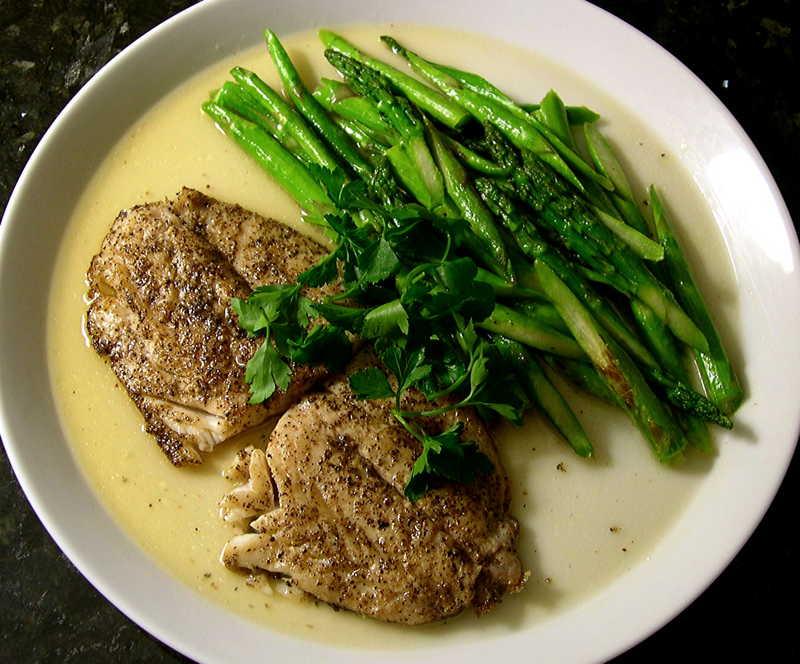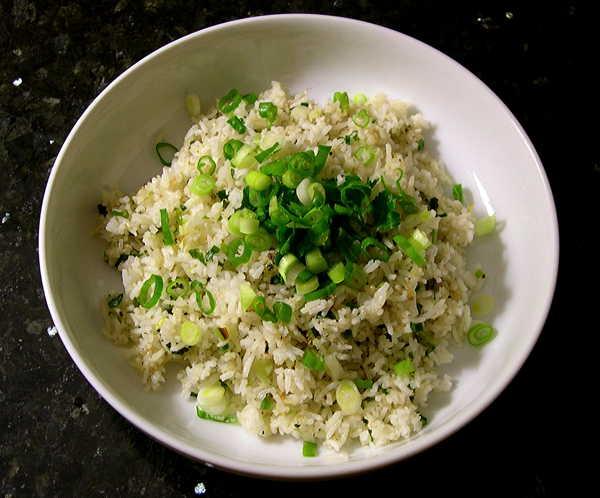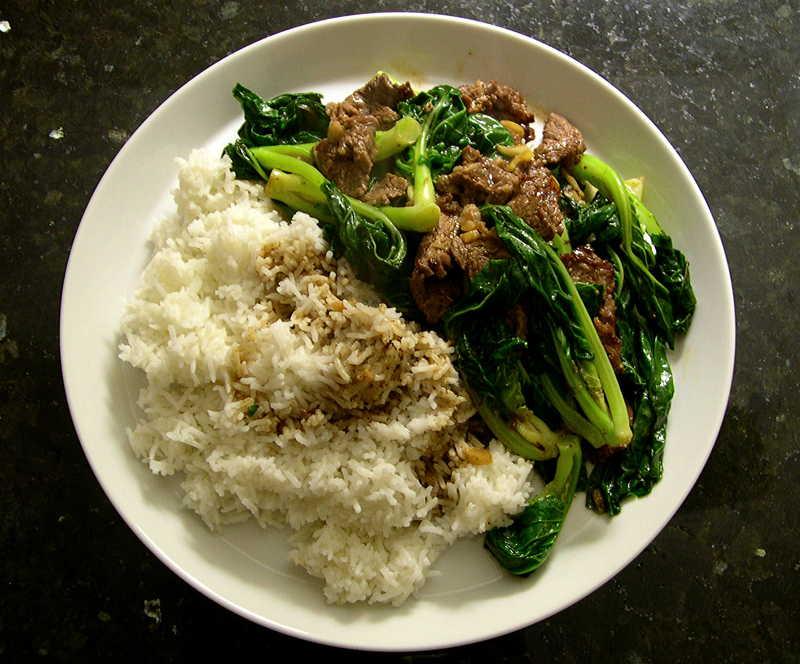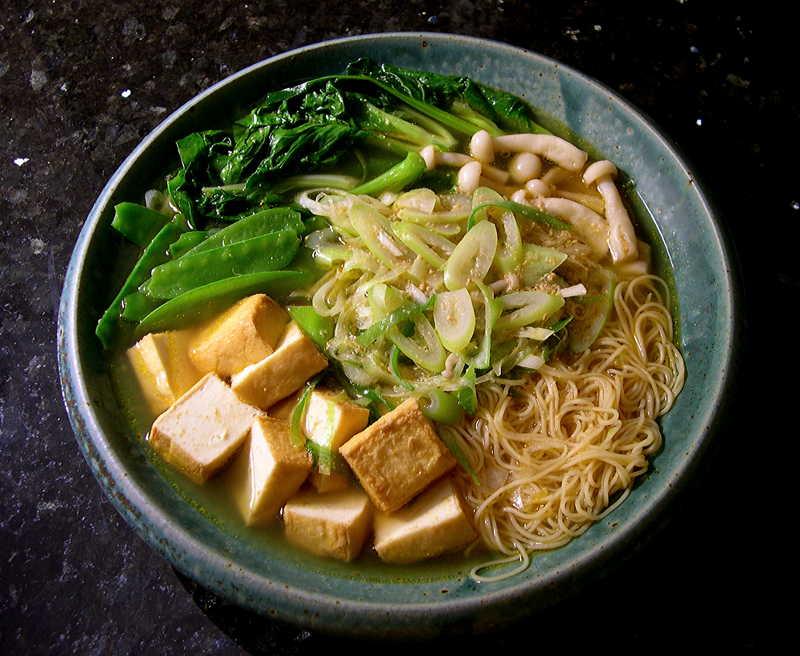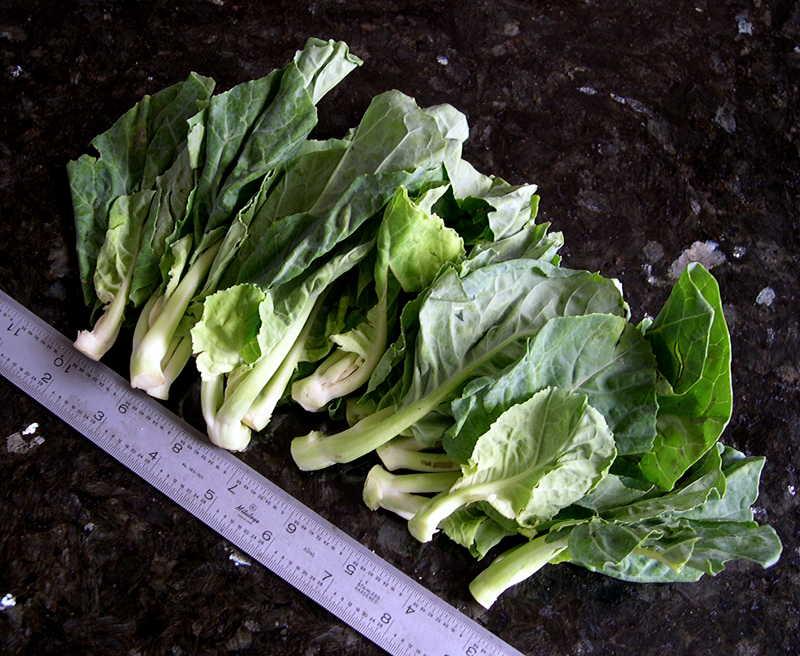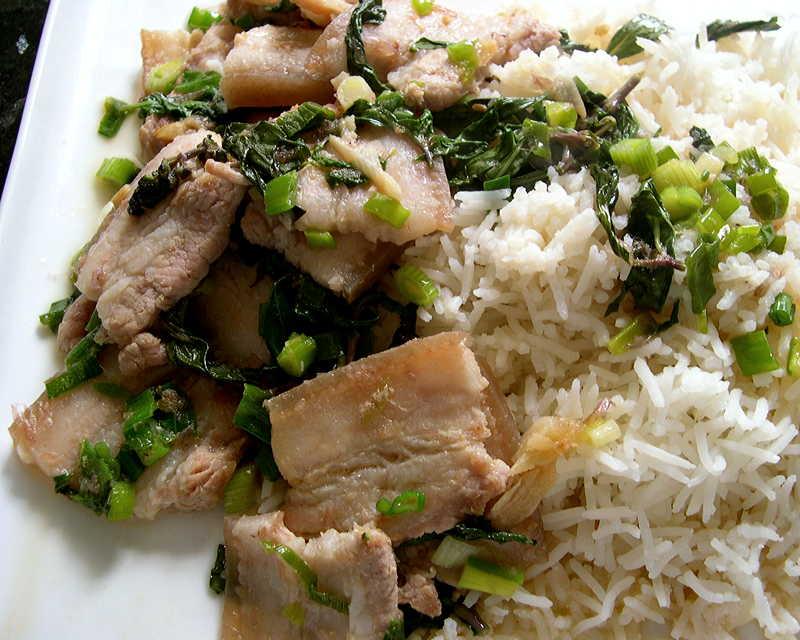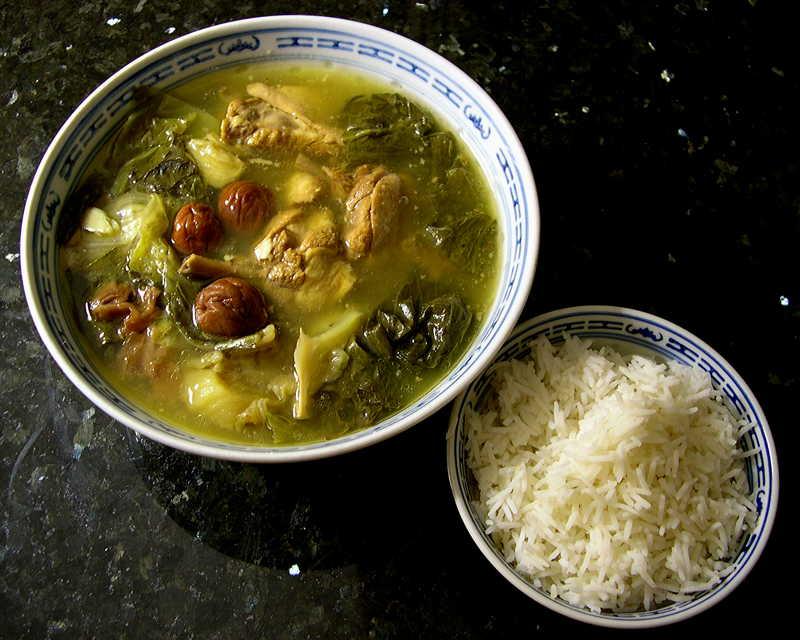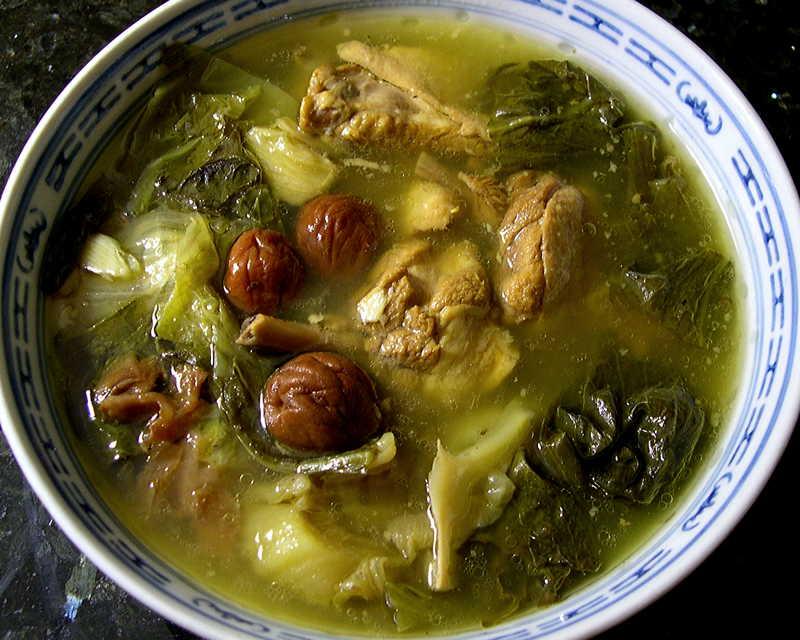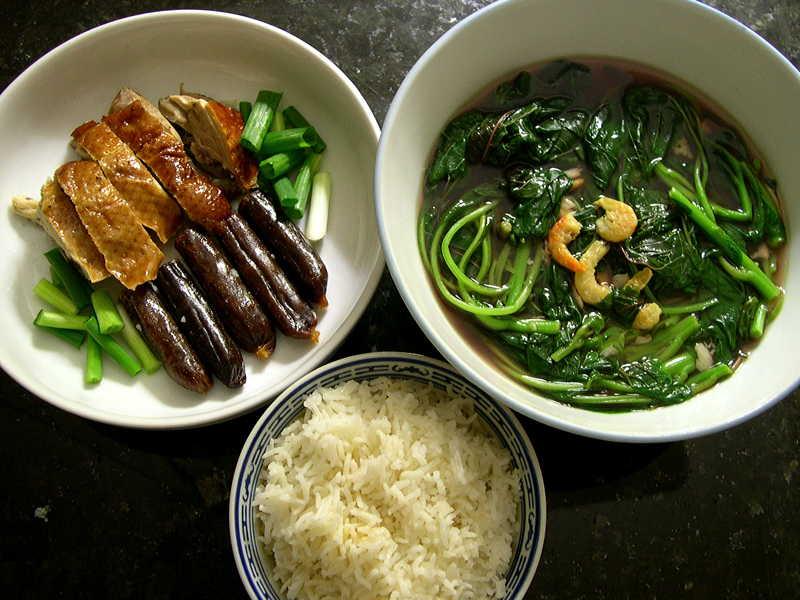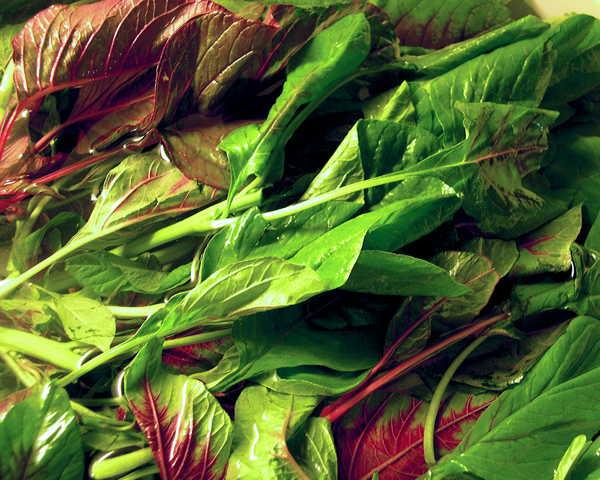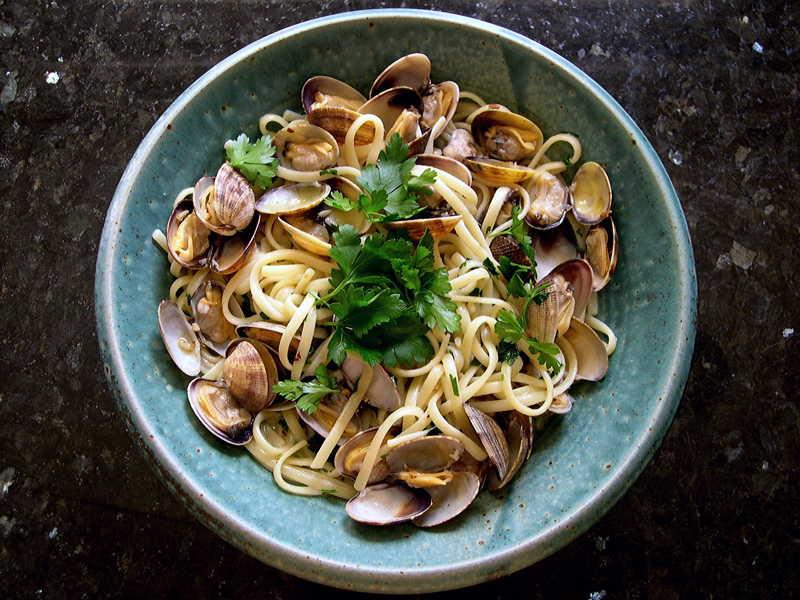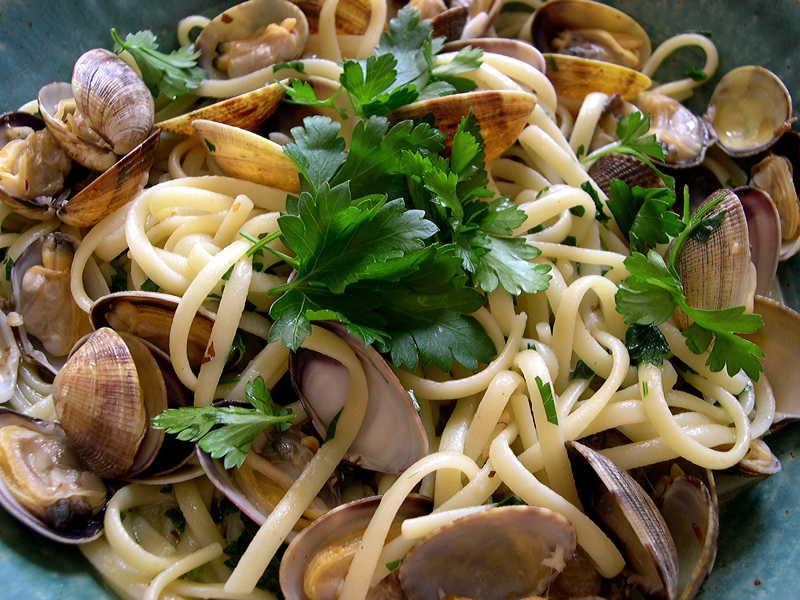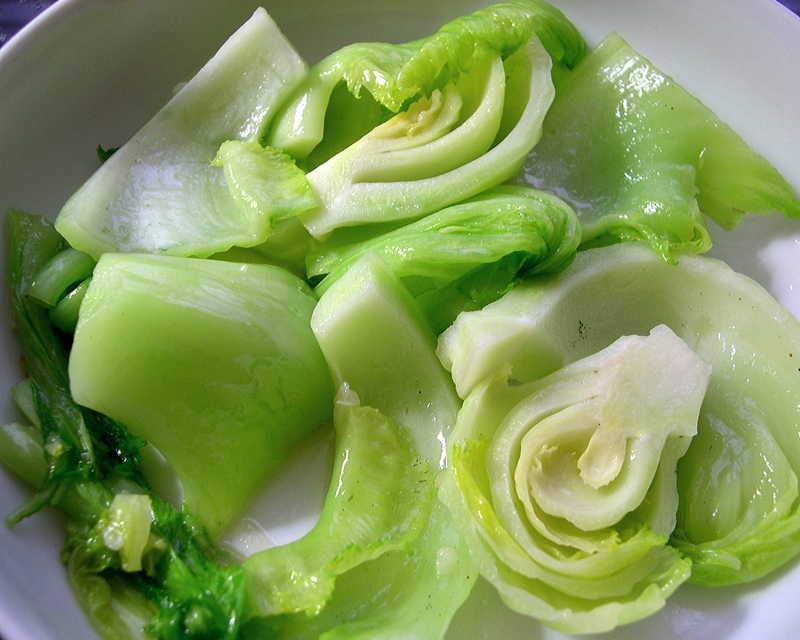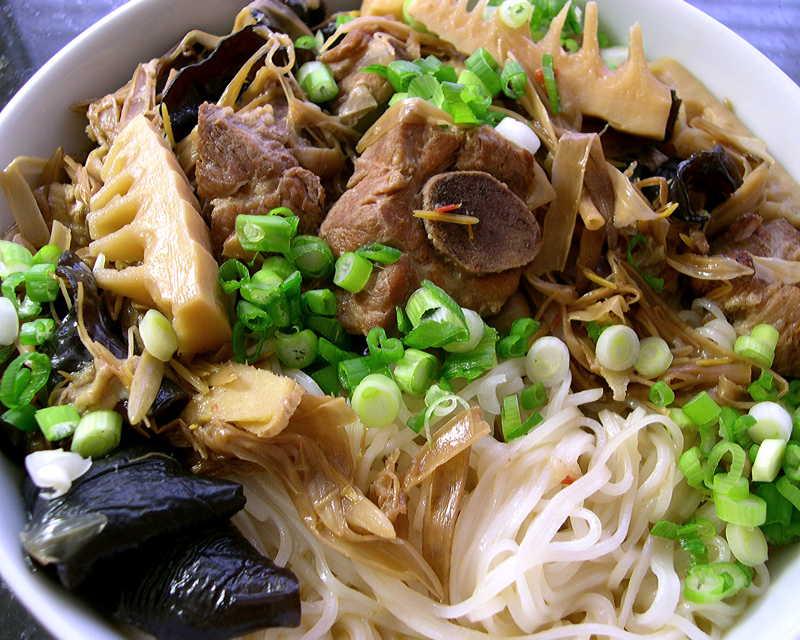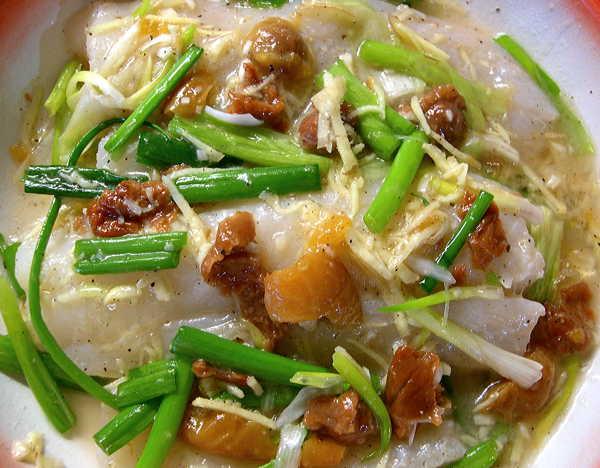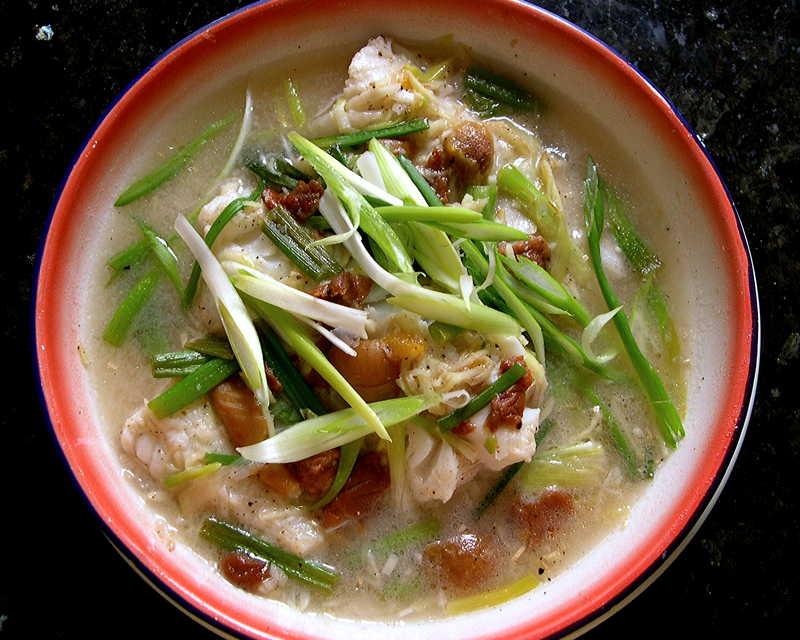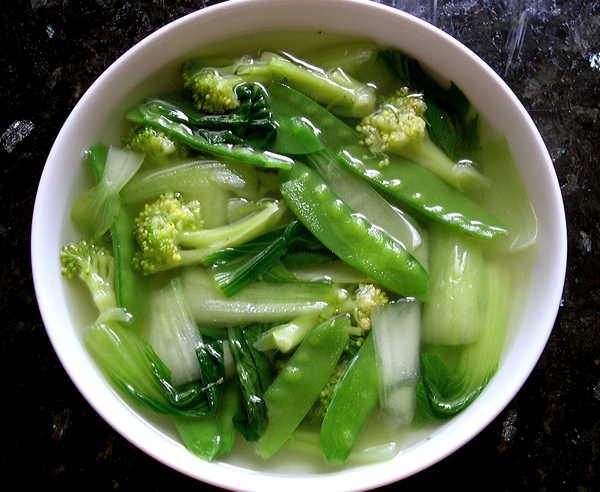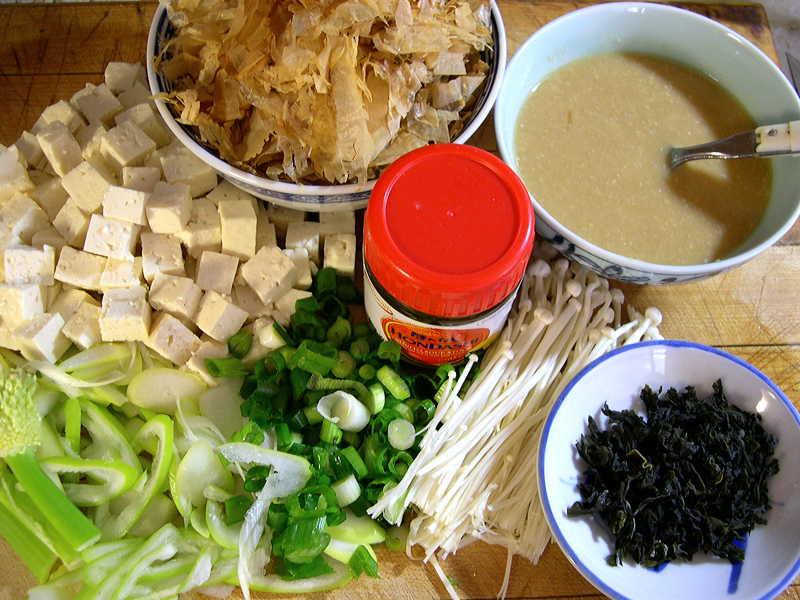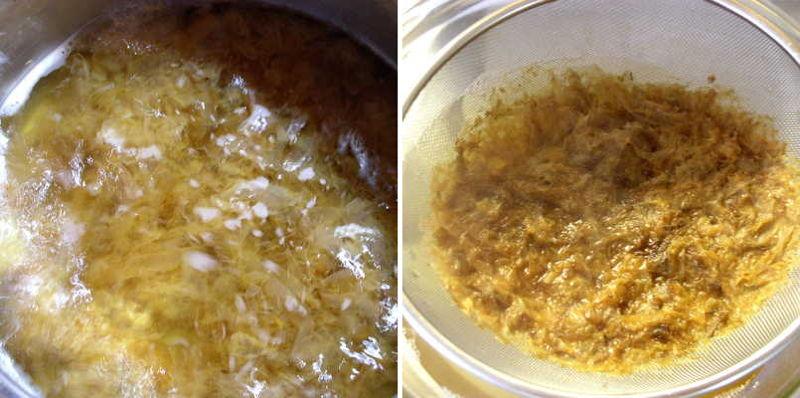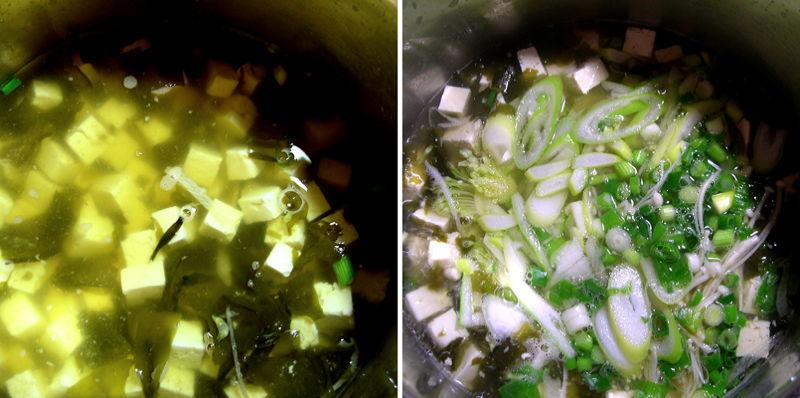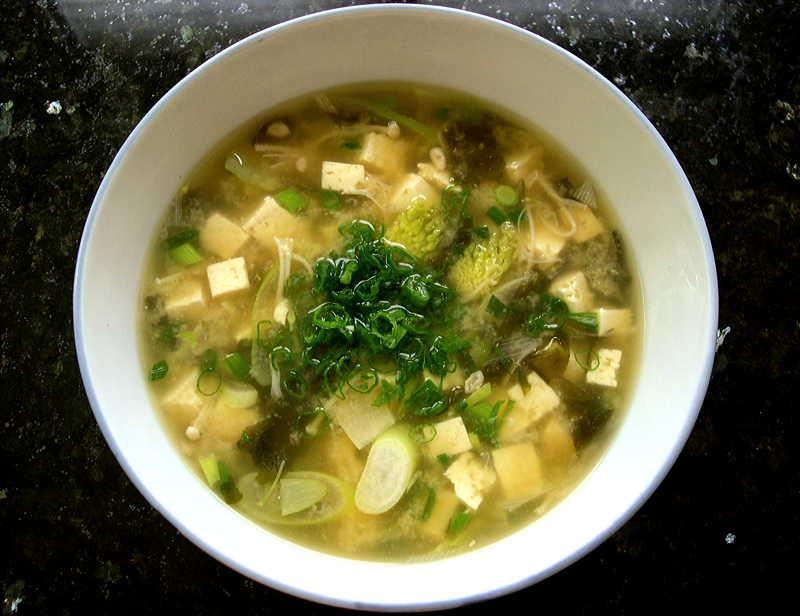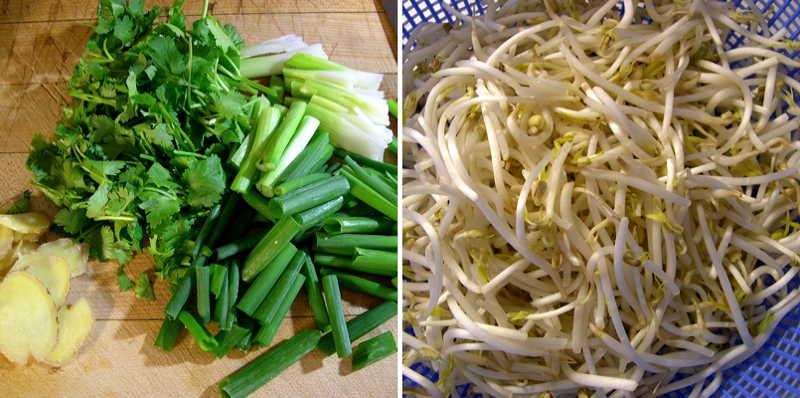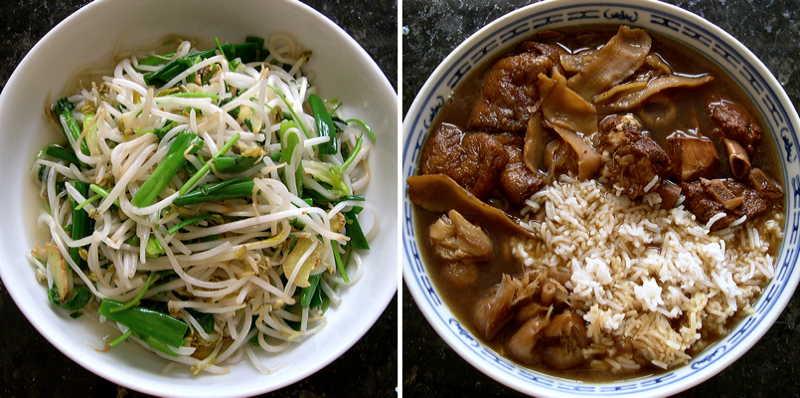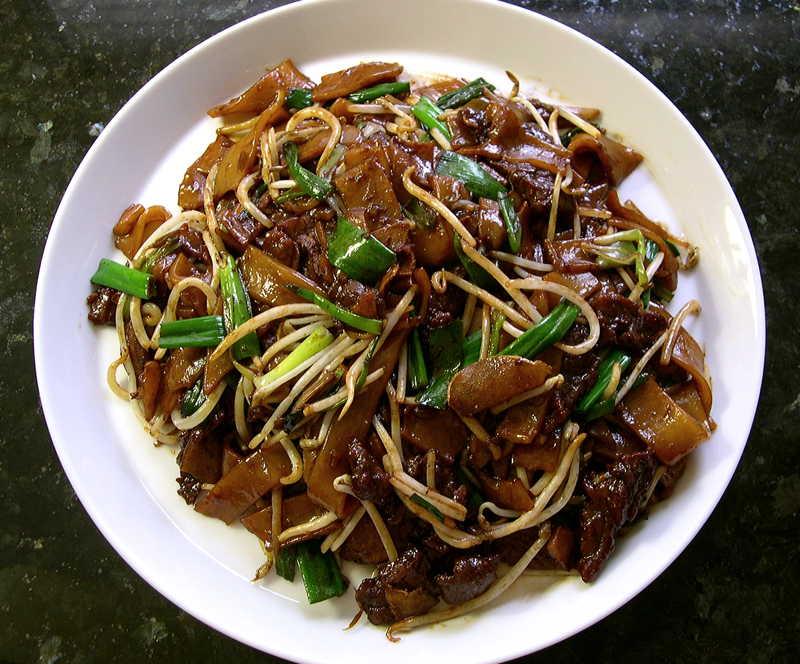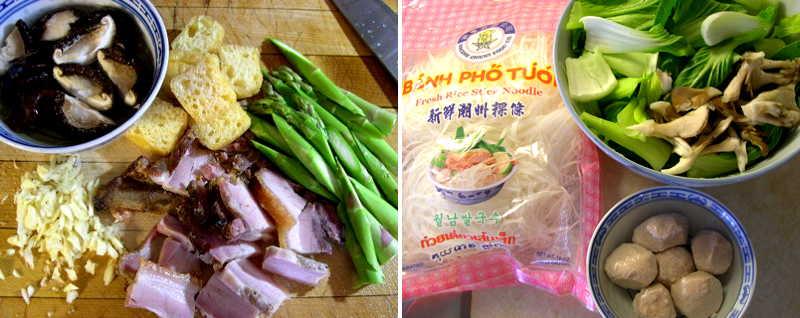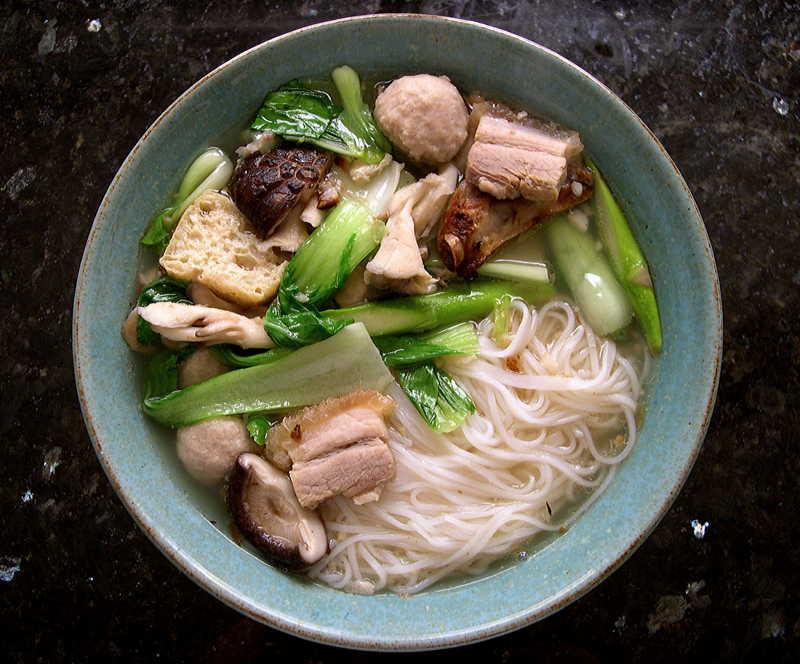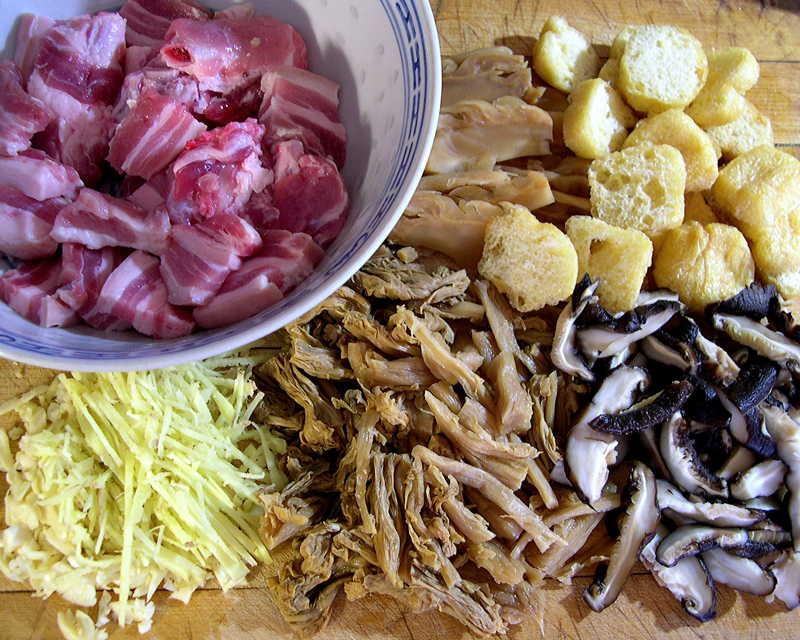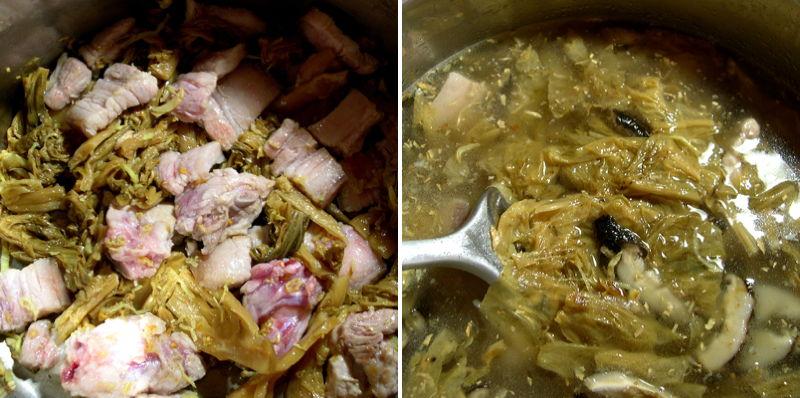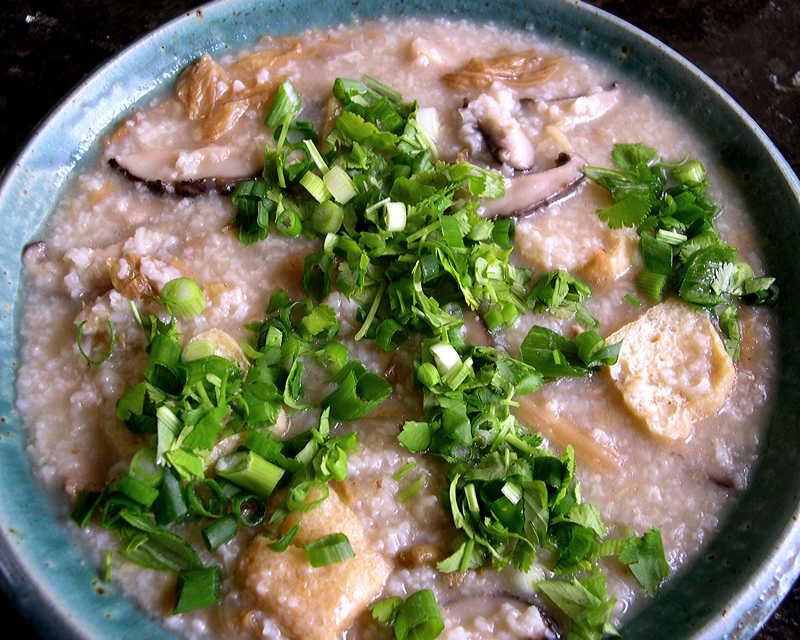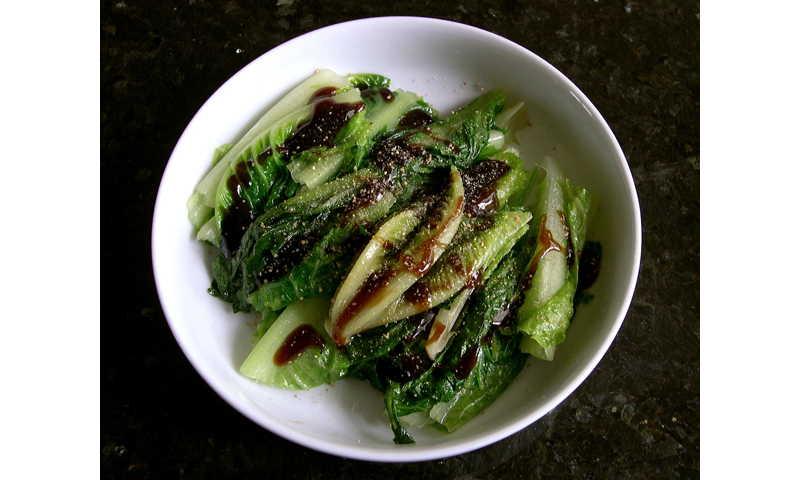-
Posts
3,810 -
Joined
-
Last visited
Content Type
Profiles
Forums
Store
Help Articles
Everything posted by huiray
-
A recent dish – fresh winter bamboo shoots stewed w/ garlic, beef, rehydrated wood-ear fungus, "fermented chunk bean curd in dressing w/ red yeast rice". Earlier in the day/night, with rice. Later in the night, also w/ rice; plus flash stir-fried Taiwan choy sum.
-
One of my misgivings about how Fuchsia Dunlop's cookbooks are venerated by the English-reading/speaking crowd in certain quarters is that she might promote the idea amongst her readership that what she writes about (Szechuanese/Sichuanese food) defines what Chinese food is. Ditto the terminology she writes about in her books. That is unfortunate, as "Chinese food" and the terms involved encompass much more than what she promotes, no matter how eloquent she is about what she writes about. Let alone cuisines that have evolved from pure/traditional Mainland China food, which she does not talk about.
-
zha cai (榨菜) is not pickled mustard ROOT. It is made from the large swollen heads/stems of a type of mustard (formed by the plant above ground), not the roots. See this image set.
-
Be aware that if your local "Asian" grocery is Cantonese or Southern Chinese (or Vietnamese) and you ask for "yacai" you may be directed to the mung bean sprouts. You need to ask for Szechuanese/Sichuanese "yacai" to get what you are thinking of. Especially if you look up Fuchsia Dunlop's books and copy down the Chinese characters (芽菜) for this "yacai" you are actually after - because this same term "yacai" (芽菜) (Jyutping Cantonese: ngaa4 coi3) refers to mung bean sprouts in other places such as in many places in Southern China/Guangdong/Hong Kong as well as SE Asia. Dunlop blithely ignores the fact that "yacai" means something completely different to many folks in some other dialect groups. ETA: It is only on her website, I think, regarding this ingredient - but not in her books, so far as I am aware - that Dunlop acknowledges "yacai" means beansprouts in many places outside Szechuan.
-
Thanks for the Crepes, Here are two previous posts of mine where I showed "standard" watercress wilted in chicken broth/stock/soup – here and here. Note also the much thicker (and succulent) stems besides the smaller leaves. I tend to pick up the standard watercress from my local Chinese/"Asian" grocer also,** rather than from a Western supermarket. I suspect the ones you saw in your S-mart are the standard variety - and probably look like this, or this, or this? ** Where it would be MUCH more expensive - like most vegetables as compared with the Chinese/"Asian" groceries; or other non-Western European places (like the Mexican/Central American places...8-10 limes for $1, anyone? (e.g. from one of the Carniceria Guanajuato Supermercados here) or 3 bunches of scallions or coriander leaves for $1 (e.g. from the Chinese grocery).
-
Thanks for the Crepes, Yes - baby kale like this is nice. I don't grow my own but I always look forward to their appearance at the Farmers' Markets, especially with the arrival of the new season. The hydroponic operations around here can and sometimes do generate kale without regard to the seasons - but in the latter case they tend to be lanky plants which they sell as-an-entire-plant (in a like manner to the cress I pictured) which are also quite tender but sort of "etiolated" in appearance. The upland cress is also new to me. I presume you are not thinking of the more usually-seen "standard" watercress when you mentioned seeing these at your S-mart (what is this place?). I simply wilted them in a broth this first time - I just posted about it here - and I conclude I much prefer the standard watercress with simple broths and would use upland cress for other purposes (garnishes, salads, etc) sans stems next time.
-
Various meals. ------------------------------------------------------------------------------------ Beef, garlic, salt, (oil, of course, in a hot pan), bittergourd, a good splash of water. White rice. Baby kale in chicken broth. ------------------------------------------------------------------------------------ Fried rice. Oil, bit of garlic, half a left-over onion finely sliced, andouille sausage [Smoking Goose] cut into rounds, sliced de-stringed celery stems, farm-fresh eggs scrambled in situ, two-day-old white rice, salt, asparagus & celery leaves trimmed into several-inch lengths, toss for just 30 secs or so more. My hands and fingers smelled faintly and pleasantly of the aroma of the sausages (from the cutting and handling of the slices) for hours. ------------------------------------------------------------------------------------ Wild striped bass fillet (cut into two) marinated w/ and steamed w/ Shaohsing wine, rice bran oil, salt, julienned ginger, sliced garlic, sliced scallions; plus maitake mushroom pieces added just before steaming. Dressed w/ more ginger & scallions. Upland cress (see here also) wilted in chicken broth.** White rice. ** Not the best vegetable for this purpose. The taste is sort-of "lost" and the stems come out tough. Standard watercress is far preferable to upland cress when done this way. Using upland cress in salads would be preferable. Fish just before steaming.
-
Here are two things that I picked up today at the Indy Winter Farmers' Market – hydroponic "upland cress" and baby kale. I've been chomping on some of both as-is and they are both tender and quite flavorful. The kale in particular has PLENTY of taste while the "upland cress" indeed tastes just like normal watercress.
-
• Wild striped bass fillets, pan-fried (simply salt & black pepper); with new-season (New York) flash-sautéed asparagus. Dressed w/ a reduction of fish stock (additionally simmered w/ parsley) made from the bones & head & etc of the bass. Parsley florets garnish. • Fried rice, from 2-day-old basmati rice, w/ just chopped scallions & rice bran oil; topped w/ more scallions. ETA: The fish stock was made with the meaty fish bones, chopped-in-half head & fins & whatnot, water, Sauvignon Blanc, salt, sliced de-stringed celery, sliced carrots, half a yellow onion finely sliced, finely sliced Tokyo negi, some dried bay leaves, a small handful of black peppercorns.
- 589 replies
-
- 10
-

-
Marinated sliced chuck eye beef stir-fried w/ garlic & baby kai-lan. White rice. The beef slices were marinated w/ Shaohsing wine, double-fermented soy sauce, vegetable oil, ground white pepper, chopped garlic, corn starch. Tossed in a very hot pan w/ peanut oil then reserved; the baby kai-lan went into the pan w/ more oil plus more chopped garlic, stir-fried, then the reserved beef went back in; seasoning adjusted.
- 589 replies
-
- 10
-

-
Various meals. -------------------------------------------------------- Noodle bowl. Fish tofu, snow pea pods, baby kai-lan, bunapi-shimeji mushrooms, sliced negi and thin egg noodles; in a spicy sesame broth (taken from a Sun Noodles Tan Tan fresh ramen pack). Some of the baby kai-lan. --------------------------------------------------------- Pork belly slices stir-fried w/ garlic, cincalok, rau húng quế, chopped scallions. White rice. --------------------------------------------------------- Itek Tim. White rice.
-
I have not eaten balut. Still, it seems to me that eating balut is (conceptually) not that different from eating ortolans in France. Yet there seems to be less "revulsion" (so to speak) about ortolans - I wonder if it is because it is FRENCH cuisine..... Here's one article describing the "covering the head" ritual (all sorts of speculations as to WHY...) and descriptions of the gradual eating of the bird, the internal organs (ALL of them), the head dangling from one's lips, the crunching of the bones...
-
Red & red-streaked amaranth ("seng choy") wilted and briefly cooked in a broth formed from sautéed smashed garlic & rehydrated dried shrimp ("har mai") in rice bran oil quenched w/ diluted chicken stock and simmering for a bit. "Lap Cheong" (Chinese dried sausages) ('Original Soft'/碎肉 = "piece meat"/minced meat; meat is pork) cooked with/in white rice (stove top). Cantonese roast duck pieces [Asia Mart] steamed on top of the rice as well towards the end. Plated w/ scallions. The white rice suffused with the juices from the "lap cheong" and duck pieces. The trimmed "seng choy" soaking in water
-
BKEats, your fried chicken looks nice. Would you be willing to share how you make yours? (I'm sure lots of folks make wonderful fried chicken too with their own spin on the dish)** ** I do note that yours (and other folk's fried chicken) is done with skin on --- contrary to what a certain Head Judge of a long-running Bravo reality cooking competition show once declared that crispy fried chicken COULD NOT be obtained with the skin on. Of course, he was taken to task by many folks who were non-famous-non-celebrity-chefs but I doubt this "head judge chef" paid any attention to folks who disagreed with him.
-
Linguine alle vongole w/ baby clams. Arbosana EV olive oil, garlic, hot red chilli flakes, Sauvignon Blanc, clam juice, simmer, then clams. Remove clams and reserve as they open. Linguine [Rustichella d'Abruzzo] straight from the pot, chopped parsley, toss, clams added back in, toss lightly. Serve. Extra parsley garnish. Had seconds, polished it all off.
- 589 replies
-
- 13
-

-
Stir-fried large Chinese mustard hearts (kai choy). Pork spare ribs braised (stove top) w/ peanut oil, garlic, ginger, fermented chili bean curd plus the soaking liquid, pre-soaked wood-ear fungus & dried lily buds (kum chum; "golden needles"), bamboo shoots (pre-simmered separately in salted water), seasoning adjusted. Dressed w/ scallions, eaten w/ fresh Vietnamese-type rice noodles.
-
I do it both ways and have done it for years, though I still generally prefer them closer to the "recommended time range". I usually let them sit a little longer than the suggested time, though. One variety that I sometimes deliberately do in the "extended sitting style" is Nong Shim's Kimchi Noodle Bowl; once in a while I do it with one of the Little Cook noodle bowls, usually the Mushroom Vegetarian one. Some of the noodle bowls with the really skinny noodles - like the Sau Tao Noodle King bowls (wonton flavor, chicken-abalone flavor, etc) - have noodles that certainly become softer with prolonged steeping but don't become the swollen noodles of the sort you experienced while much of the soup still remains. These are in waxed cardboard bowls, though, not styrofoam bowls - so they do become at most barely lukewarm after standing around for a long time.
-
Yes, chopsticks ought to be considered more frequently (or fork and SPOON) when eating "fiddly" food, especially here in North America. As far back as a couple of decades ago, and even up to the present time,** I have asked some food establishments/restaurants if they might have a pair of chopsticks I might use for "fiddly dishes" and I have always (to date) been greeted with blank or uncomprehending stares. These were "Western-type" cuisine restaurants, on the whole, although they also encompassed some fusion-y Western-"Asian" type places, usually run under Western auspices. E/SE Asian establishments would not blink in the least at this, of course. I suppose it would be a valid counter that many folks would not be proficient with chopsticks, and that is a fair argument. With regards to the "fork and spoon" option (which is a normative option in Thailand and SE Asia and other places) I think it interesting that many folks in the Western Cuisine sphere still either look askance at it (if they consider it at all) or think of it not at all. ** ETA: This includes very high-end places where the food on the plates were most definitely composed with tweezers (including my observing them do so) yet I would be provided with a large clunky fork (and knife, which was useless in the extreme) to eat the composed plate with. But when I asked them for a suitable implement to eat these preciously-composed plates of food with, such as a pair of chopsticks - please - if they had it, they would look at me as if I had three heads.
-
Cod fillet marinated w/ and steamed w/ ginger, garlic, scallions, rice bran oil, wet-salted plums (ripped apart) plus some of the pickling liquid, sweet & sour plums (ripped apart) plus some of the jelly, hon-mirin [Takara], ground white & black pepper, a bit of salt. Before steaming. After steaming, dressed w/ more fresh scallions. Eaten w/ broccoli, snow peas & baby bok choy briefly simmered w/ chicken stock. Plus several bowls of white rice (not shown).
- 589 replies
-
- 10
-

-
Some comfort food. ------------------------------------------------------------------------------------------------------------------- Fedelini [De Cecco] w/ Hazan tomato sauce & Parmigiano Reggiano. ------------------------------------------------------------------------------------------------------------------- Miso soup. With katsuobushi stock augmented w/ hon-dashi granules; cut wakame, firm tofu cube-lets; then enoki mushrooms, sliced negi (w/ flowers), chopped scallions; then a slurry of mutenka shiro miso [Maruman] right at the end. Garnished w/ finely sliced green parts of scallions. The stuff On the way there After adding the miso, heating continued just briefly, then serving. Ate all of it, ~2½ bowls worth.
-
A couple of miscellaneous meals from last week. Bean sprouts stir-fried w/ ginger, scallions & coriander leaves. More of the BKT from here w/ rice. Another batch of "ginger – scallions – beef – hor fun" a.k.a. "dry – stir-fried – beef – hor fun".
- 589 replies
-
- 12
-

-
Couple of meals. -------------------------------------- Odds-and-ends soup w/ fresh Vietnamese rice noodles (bánh phở tươi). Leftover roast pork (commercial) sautéed w/ garlic & oil, water, rehydrated thick-cap "flower mushrooms" (this type), pork meatballs (commercial), tau pok, last of the maitake mushrooms, baby bok choy & asparagus. Salted to taste. Noodles briefly blanched in simmering water. -------------------------------------- Rice congee w/ pork spare ribs & pork belly ("five flower meat"), garlic & ginger/peanut oil, half of a plant of "mui choy" (a kind of salted preserved mustard; briefly soaked & rinsed, chopped up), sliced rehydrated "flower mushrooms" (this type), water, basmati rice, tau pok. Scallions & coriander leaves garnish. Oh, plus romaine blanched in oiled simmering water, drained, dressed w/ oyster sauce & ground pepper.
- 589 replies
-
- 11
-




